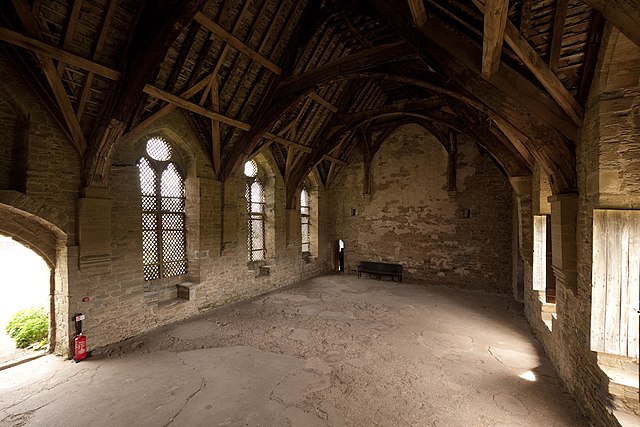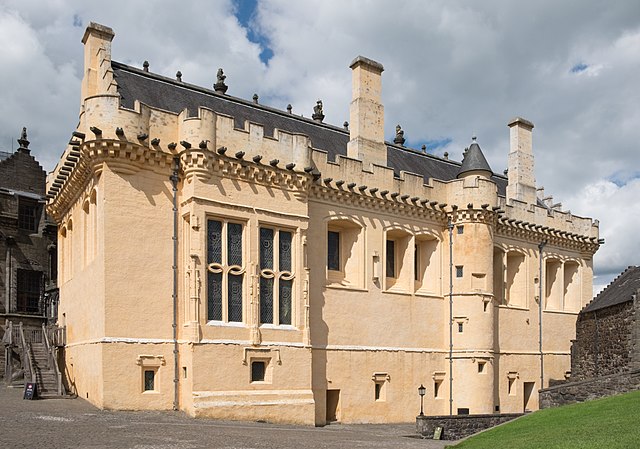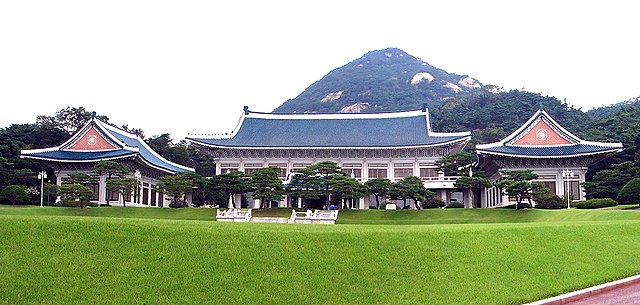A great hall is the main room of a royal palace, castle or a large manor house or hall house in the Middle Ages, and continued to be built in the country houses of the 16th and early 17th centuries, although by then the family used the great chamber for eating and relaxing. At that time the word "great" simply meant big and had not acquired its modern connotations of excellence. In the medieval period, the room would simply have been referred to as the "hall" unless the building also had a secondary hall, but the term "great hall" has been predominant for surviving rooms of this type for several centuries, to distinguish them from the different type of hall found in post-medieval houses. Great halls were found especially in France, England and Scotland, but similar rooms were also found in some other European countries.
The Great Hall in Barley Hall, York, restored to replicate its appearance in around 1483
Great Hall at Stokesay Castle
Plan of Horham Hall, including a screens passage, leading from the entrance porch; a dais; a bay window. The main staircase is at the dais end, and the hall was the full height of the two-storey house
The Great Hall at Stirling Castle built for James IV. The larger windows lit the high table
A palace is a grand residence, often serving as a royal residence or the home for a head of state or some other high-ranking dignitary, such as a bishop or archbishop. The word is derived from the Latin name palātium, for Palatine Hill in Rome which housed the Imperial residences.
The Winter Palace, an imperial palace in Saint Petersburg, Russia; which served as the official residence of the Russian emperors.
The Royal Site of San Lorenzo de El Escorial, in Spain, is a Renaissance complex that has functioned as a royal palace, monastery, basilica, pantheon, library, museum, university and hospital.
The Blue House, the official residence of the president of South Korea
Domus Augustana of Palatine Hill in Rome, the origin of the term "palace"








